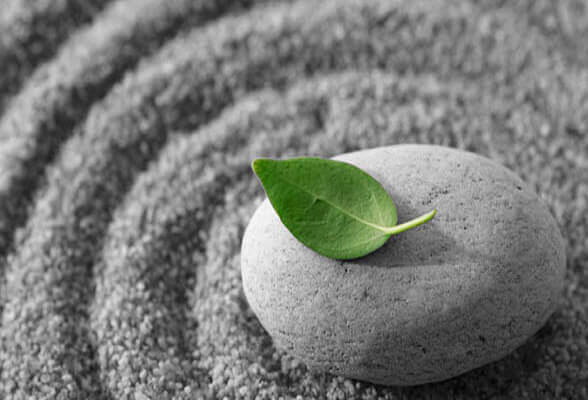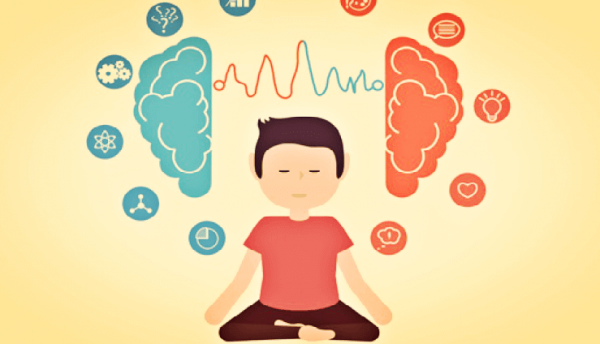3 Simple Ways to Practice Mindfulness in Your Daily Life


Written and verified by the psychologist Valeria Sabater
Start practicing mindfulness and you’re taking a step towards a better life. Now, it’s not always easy to make this ancient philosophy work in modern times. But there are a lot of different strategies we can use: all we have to do is find the one that best suits our needs, our daily life.
To be honest, most of us are attracted to mindfulness, and not because it’s popular now, not because someone told us about it or because we seem to come across it in every book, magazine, and self-help article nowadays. It interests us and even seduces us because it invites us to see the world from a more vivid, higher yet closer perspective. It’s a wake-up call and most importantly, useful.
But our days drag us down with our obligations, rigid schedules and busy outlook on life. We can’t create more hours in the day. We can’t find time we don’t have. And that’s why we tell ourselves that meditation is definitely not for us.
But we’re wrong. Mindfulness is more accessible than ever. Some start in their own home, guided by a book or even an online course. And then there are those who can’t imagine being still or can’t function in a classroom setting with other people. Good news: we can mediate while doing sports, while taking a walk.
As you can see, mindfulness is always there, it’s within our reach…

Mindfulness in today’s busy world
Times change but the roots of spirituality and the extraordinary legacy of mindfulness remain. And actually more needed now than ever. Life is so complicated now … How can we learn to develop full consciousness? How can we learn to meditate, breathe, and connect with the “here and now”?
- Rohan Gunatillake is a innovator revolutionizing the realm of mindfulness in one very concrete way: by doing meditation dynamically, thanks to new technologies or even sports.
- The author explains how we’ve changed. Our needs are now more intense, our world is crazy, we have so many more ways of learning: the internet and new technologies bring us closer than ever to personal growth and even into the world of meditation.
- Rohan Gunatillake calls it “urban meditation.” Because the truth is, cities, work, and the digital world is what defines many of us today. How can we sneak away for a 10-day nature retreat to learn how to meditate? If we can’t, and we probably can’t, we have our own home and those wonderful technologies that can teach us how to connect with reality…
The world is constantly changing and we’re a part of it. But let’s not forget: mindfulness is also mobile. Let’s enjoy the present, in all of its wonderful nuances, ups and downs, smells, tastes, and sensations….

Ways to start practicing mindfulness
As Daniel Goleman said in his time, attention is a muscle that we must use on a daily basis to be more aware of our surroundings as well as what’s going on within. However … how do we do this if we have no time? Can we really learn to meditate by going to an hour-long class once a week?
Well, it’s possible, but some people go to these classes out of curiosity and end up leaving them after a few days because it’s not working. They’re having trouble quieting their busy mind and finding that perfect balance within where everything else is in the background.
But it’s not an accident that this more than 2,500-year-old Buddhist practice ended up here in the West. It is because scientists like Dr. Kabat-Zin — among others — understand that our demanding world moves fast, and we therefore need mindfulness. To get started, we have multiple options to choose from.

Mindfulness at work
Companies like Apple, Google, Nike, and eBay already apply mindfulness in their workplaces on a daily basis. For this technique to be effective, we would of course need the right work environment and company policies, but it’s actually not so complicated for us to do it ourselves. Here are some guidelines:
- Get to work without rushing (you may not manage this the first week, but little by little you’ll get there.)
- Dedicate 5 minutes to situating yourself, planning the day, looking at what you’re going to do, how you feel.
- Breathe deeply and be aware of the here and now of your body, your posture and any tension.
- Take a 5 minute break every 40 minutes to meditate, breathe, and connect with yourself again.
Meditate while you walk
The ideal situation would be to give ourselves half an hour every day to go for a brisk walk, not only to exercise our body, but also our mind on the basic principles of mindfulness. Here are some main guidelines:
- Start walking at a normal pace. Little by little find a pace that’s relaxing, cathartic, and liberating. Some will walk at a slow pace and others may decide to walk faster.
- It’s time to focus your attention on something. Visualize your mind as if it were a lantern shining its light on one specific aspect and then another: first your breathing, then the sensation of your feet as they touch the ground, then the wind touching your skin … Focus your attention on those aspects in a cyclical manner, first one and then another.
- Eventually you will realize that you no longer need to focus your attention on everything going on with your body. After a few days the light of your lantern will be so far-reaching that you will perceive everything at once.

Mindfulness at home
If you are someone who is not comfortable in a classroom or listening to an in-person facilitator, or if you don’t have time to attend a course, don’t forget that you always have online books and courses at your fingertips. Thanks to these, we can learn the foundations of mindfulness at home.
If you do, it never hurts to follow these suggestions:
- Choose a space, a place, and a time of the day that best suits your needs to practice meditation. Remember you must really commit to it because it will take consistency.
- Start with 10 or 15 minutes. Little by little, as you get used to it you can do it for longer.
- Choose a technique that works for you.
- Be patient and don’t expect immediate results. Mindfulness takes time and commitment.
Times are changing and even with our busy, demanding lives, we’ll always have this remarkable practice within our reach. All we have to do is find the path that best suits us. Let’s try something new and take the first step toward understanding and mindfulness.
Start practicing mindfulness and you’re taking a step towards a better life. Now, it’s not always easy to make this ancient philosophy work in modern times. But there are a lot of different strategies we can use: all we have to do is find the one that best suits our needs, our daily life.
To be honest, most of us are attracted to mindfulness, and not because it’s popular now, not because someone told us about it or because we seem to come across it in every book, magazine, and self-help article nowadays. It interests us and even seduces us because it invites us to see the world from a more vivid, higher yet closer perspective. It’s a wake-up call and most importantly, useful.
But our days drag us down with our obligations, rigid schedules and busy outlook on life. We can’t create more hours in the day. We can’t find time we don’t have. And that’s why we tell ourselves that meditation is definitely not for us.
But we’re wrong. Mindfulness is more accessible than ever. Some start in their own home, guided by a book or even an online course. And then there are those who can’t imagine being still or can’t function in a classroom setting with other people. Good news: we can mediate while doing sports, while taking a walk.
As you can see, mindfulness is always there, it’s within our reach…

Mindfulness in today’s busy world
Times change but the roots of spirituality and the extraordinary legacy of mindfulness remain. And actually more needed now than ever. Life is so complicated now … How can we learn to develop full consciousness? How can we learn to meditate, breathe, and connect with the “here and now”?
- Rohan Gunatillake is a innovator revolutionizing the realm of mindfulness in one very concrete way: by doing meditation dynamically, thanks to new technologies or even sports.
- The author explains how we’ve changed. Our needs are now more intense, our world is crazy, we have so many more ways of learning: the internet and new technologies bring us closer than ever to personal growth and even into the world of meditation.
- Rohan Gunatillake calls it “urban meditation.” Because the truth is, cities, work, and the digital world is what defines many of us today. How can we sneak away for a 10-day nature retreat to learn how to meditate? If we can’t, and we probably can’t, we have our own home and those wonderful technologies that can teach us how to connect with reality…
The world is constantly changing and we’re a part of it. But let’s not forget: mindfulness is also mobile. Let’s enjoy the present, in all of its wonderful nuances, ups and downs, smells, tastes, and sensations….

Ways to start practicing mindfulness
As Daniel Goleman said in his time, attention is a muscle that we must use on a daily basis to be more aware of our surroundings as well as what’s going on within. However … how do we do this if we have no time? Can we really learn to meditate by going to an hour-long class once a week?
Well, it’s possible, but some people go to these classes out of curiosity and end up leaving them after a few days because it’s not working. They’re having trouble quieting their busy mind and finding that perfect balance within where everything else is in the background.
But it’s not an accident that this more than 2,500-year-old Buddhist practice ended up here in the West. It is because scientists like Dr. Kabat-Zin — among others — understand that our demanding world moves fast, and we therefore need mindfulness. To get started, we have multiple options to choose from.

Mindfulness at work
Companies like Apple, Google, Nike, and eBay already apply mindfulness in their workplaces on a daily basis. For this technique to be effective, we would of course need the right work environment and company policies, but it’s actually not so complicated for us to do it ourselves. Here are some guidelines:
- Get to work without rushing (you may not manage this the first week, but little by little you’ll get there.)
- Dedicate 5 minutes to situating yourself, planning the day, looking at what you’re going to do, how you feel.
- Breathe deeply and be aware of the here and now of your body, your posture and any tension.
- Take a 5 minute break every 40 minutes to meditate, breathe, and connect with yourself again.
Meditate while you walk
The ideal situation would be to give ourselves half an hour every day to go for a brisk walk, not only to exercise our body, but also our mind on the basic principles of mindfulness. Here are some main guidelines:
- Start walking at a normal pace. Little by little find a pace that’s relaxing, cathartic, and liberating. Some will walk at a slow pace and others may decide to walk faster.
- It’s time to focus your attention on something. Visualize your mind as if it were a lantern shining its light on one specific aspect and then another: first your breathing, then the sensation of your feet as they touch the ground, then the wind touching your skin … Focus your attention on those aspects in a cyclical manner, first one and then another.
- Eventually you will realize that you no longer need to focus your attention on everything going on with your body. After a few days the light of your lantern will be so far-reaching that you will perceive everything at once.

Mindfulness at home
If you are someone who is not comfortable in a classroom or listening to an in-person facilitator, or if you don’t have time to attend a course, don’t forget that you always have online books and courses at your fingertips. Thanks to these, we can learn the foundations of mindfulness at home.
If you do, it never hurts to follow these suggestions:
- Choose a space, a place, and a time of the day that best suits your needs to practice meditation. Remember you must really commit to it because it will take consistency.
- Start with 10 or 15 minutes. Little by little, as you get used to it you can do it for longer.
- Choose a technique that works for you.
- Be patient and don’t expect immediate results. Mindfulness takes time and commitment.
Times are changing and even with our busy, demanding lives, we’ll always have this remarkable practice within our reach. All we have to do is find the path that best suits us. Let’s try something new and take the first step toward understanding and mindfulness.
This text is provided for informational purposes only and does not replace consultation with a professional. If in doubt, consult your specialist.







